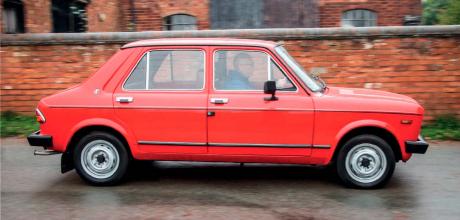1987 Zastava Yugo 513 5-Door
Budget models rarely survive in significant numbers, not least because few owners were willing or able to invest money in maintenance and repair. Ian Macaulay's Yugo 513 has beaten the odds though, and is believed to be one of only two survivors in the UK.
THE ULTIMATE RARITY?
ZASTAVA YUGO 513 LOW-MILEAGE SURVIVOR
READERS' CARS YUGO 513 One of only two known survivors in the UK, and it is a low-mileage gem
STORY TOLD BY IAN MACAULAY
PICTURES: ANDY STARKEY
I think it is fair to say that any Yugo is something of an acquired taste, but I have always been attracted by the left-field stuff rather than the more conventional offerings from mainstream manufacturers. When the Berlin wall came down in 1989 and we first saw all those Trabis driving around, I didn't even know what they were but I knew instantly that I wanted one. I've had nine Trabants now, and I've still got one. My partner despairs of me sometimes, she just doesn't get my car taste at all, but you either get it or you don't. For my part, every time I get in the Yugo it just makes me smile.
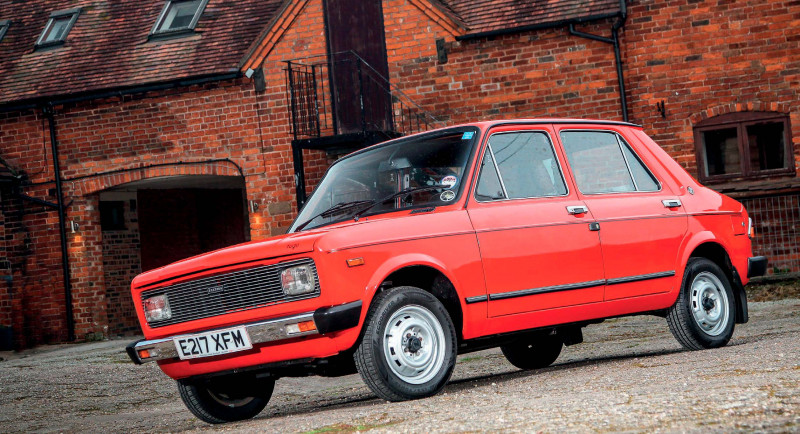
Mention the Yugo name to most people though, and they immediately think of the smaller Fiat 127-based models, the 45, 55 and 65s. However, this is a 513, which was based on the Fiat 128 and built from 1971-2008, but only sold in the UK from 1981-1990. In Yugoslavia it was badged as the Zastava 101, Zastava being the name of the company in Kragujevac that built it. In some markets it was sold as the Skala and in others as the Zastava 128 – they did not try to hide its Fiat 128 origins, and indeed there was no reason to do so because in 1971 that was an excellent, modern design with a belt-driven OHC engine transversely mounted and driving the front wheels, sharp steering and up-to-date MacPherson strut front suspension.
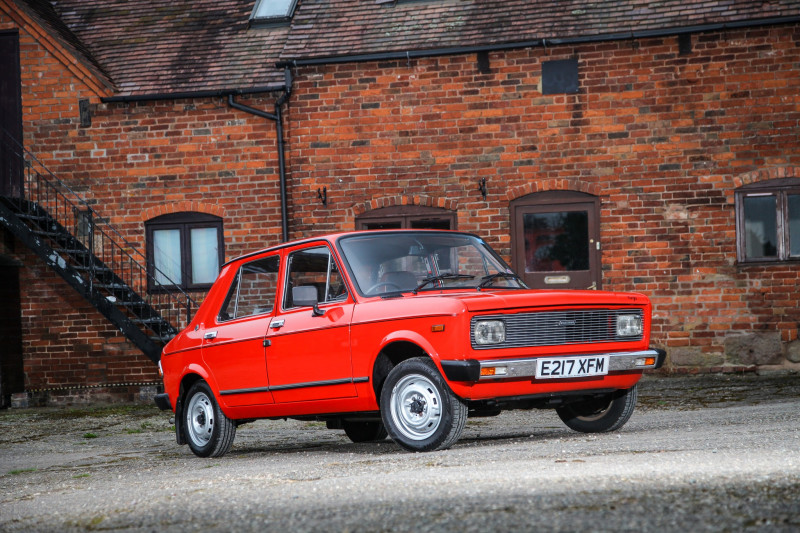
Zastava was founded in 1853, but only moved into vehicle production during the late 1930s, initially supplying trucks to the Yugoslavian army. Passenger vehicle production commenced in 1953 using designs licenced by Fiat. These vehicles were sold under the Zastava banner until 1980, when the Yugo brand was introduced and sold in the UK by Zastava (GB) Ltd, based on Basingstoke Road in Reading. The 101 was sold in the UK as the 311, 313, 511 and 513. Zastava had developed the model with a hatchback, something Fiat never offered on their 128, and that was reflected in the numbering system – the first number denotes the number of doors (either three of five) and the last two digits refer to the engine size of 1100 or 1300. They also produced a 411 and a 413, which were four-door saloons and almost identical to the Fiat 128. They were sold over here too, but there are no known survivors of those in the UK.
In fact, any Yugo is a rare beast. The 45, 55 and 65 were probably bigger sellers over here than the 128-based cars, but even those are not around in huge numbers. As for the 128-based models, it is very difficult to get accurate numbers because so many cars are languishing in storage and pre-date the SORN system, but there are only two 513s that we know of, mine and a major restoration project that recently emerged from a barn in Kent.
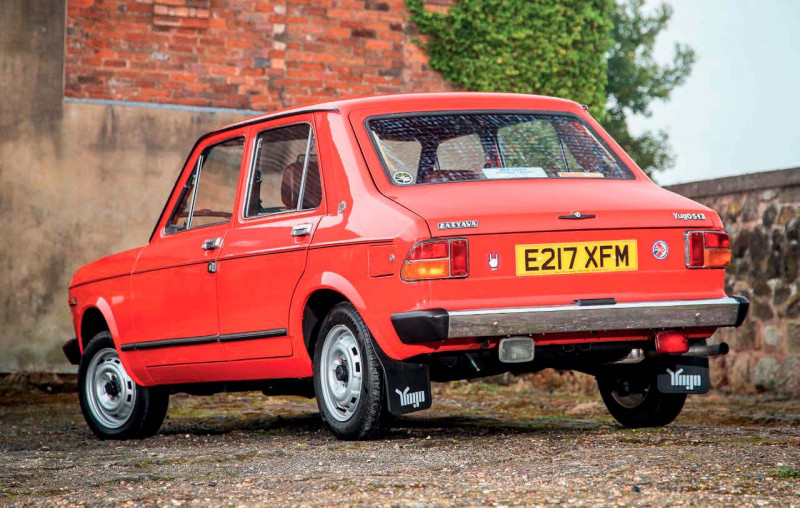
This is actually my second Yugo. I bought a 311 in 2007 (which I have since sold) and that purchase led three of us – myself, Charlie Mitchell and Phil Durst – to set up the Zastava Yugo Club UK in 2010. I was editor of the club magazine, which we called Yugo Your Way, but with so few cars to go around there were simply not enough prospective members to keep the club going and it folded around 2014. We are now a Facebook group, and people can find us by searching online for Yugo/Zastava Cars UK. We have 1100 members would you believe, although a lot of those are overseas members – quite a number in Serbia and Croatia as you would expect, but the Yugo seems to have quite a following in New Zealand and we have members from there too.
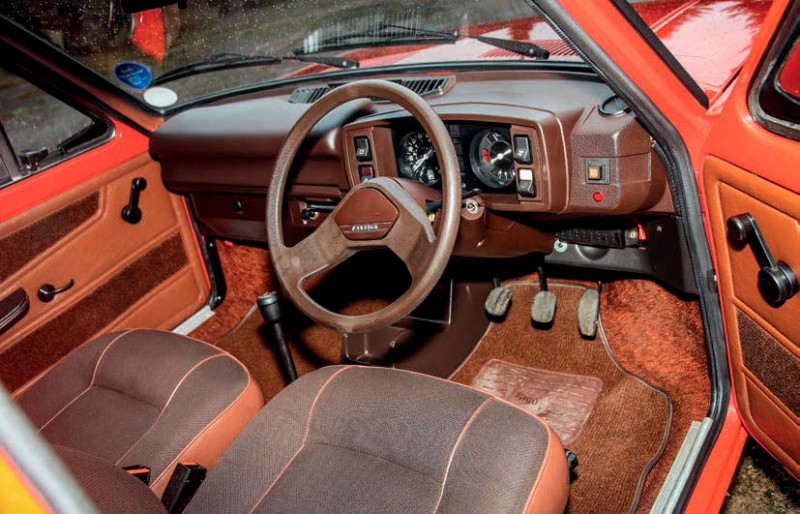
It was being editor of the club magazine that led me to the 513 you see here. In August 2011, the club was approached by the proprietor of a small family-run garage in Ellesmere, Shropshire with the news that he owned a Yugo 513 which had covered just 9200 miles and was in near to new unrestored condition. Apparently, his garage had supplied the car new in November 1987 on a broker arrangement to an elderly customer who didn’t want to travel to the nearest Yugo dealership in Wrexham. The Shropshire garage maintained the vehicle for that owner, and eventually repurchased it when they moved into residential nursing care.
The garage was now looking to sell it to someone who would preserve the car and perhaps display it at a few classic car events. Naturally I wasted little time in arranging to view it and, having first confirmed its remarkable condition and provenance, agreed to buy it. A couple of weeks later a friend and I collected the car on a trailer, and once at home I commenced a programme of recommissioning which included replacement of most rubber components such as the timing belt, tyres, driveshaft gaiters, flexible brake hoses and more. In all other respects the car was in first class order with near perfect paint, chrome and interior and no evidence of corrosion or even minor rust.
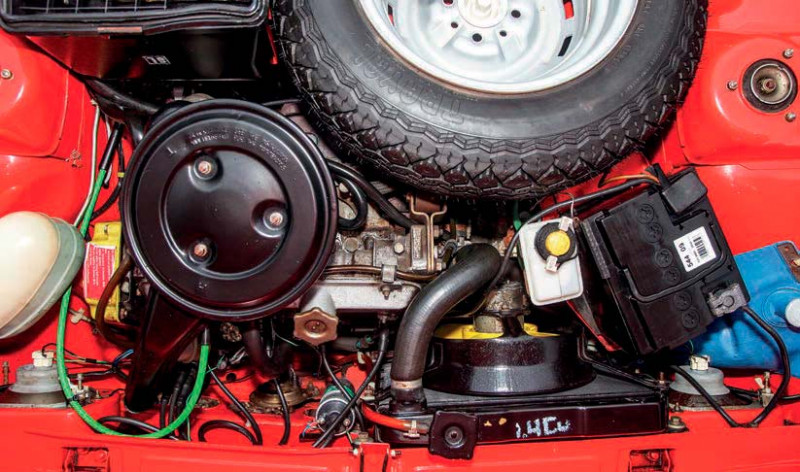
As for getting parts, that is not as hard as you might expect given the rarity of the cars today. When the Yugo dealerships were closing down in the early 1990s, Charlie went round systematically buying up all of the spare parts, manuals and cars – essentially anything Yugo related. He still has plenty of parts, but so does Julian Pearson in Yorkshire (a collector of pristine low-mileage classics from the 1970s and 1980s who will feature in this story again in a moment!), and there is a former Yugo dealer up in rural Lincolnshire who has a large collection too. In fact there are probably far more spares about than cars that actually need them! And of course, if you can't find Yugo stuff there will invariably be Fiat parts that will fit. Certainly most mechanical components from the 128 will fit on my Yugo.
Anyway, I kept the 513 in storage until February 2013, when personal circumstances dictated a reluctant sale to Julian Pearson in Yorkshire. He completed the recommissioning programme, as well as undertaking a full Dinitrol treatment of the underbody and box sections. He also sourced rare Yugo accessories such as Perspex headlamp deflectors and a centre console which the car now wears with pride.
Julian and I remained friends over the years, and one evening in September 2019 whilst chatting online, he announced that having now reached 22 cars he needed to reduce his collection. I quickly offered to take the Yugo off his hands, a suggestion which initially received a negative response as this was apparently one car he wanted to keep. He countered my suggestion by offering me a very nice low mileage Morris Ital, but that wasn't really my bag so I politely declined.
Somewhat reluctantly, Julian eventually agreed to sell the Yugo back to me, and by the time I'd had it trailered back to my home in Staffordshire, the mileage had risen to just 9900.
In my current ownership the mileage has increased to nearly 11,000 miles. Its most recent and lengthy outing was to the Festival of the Unexceptional at the end of July 2021, where it attracted the attention of Sarah Crabtree of Bangers and Cash fame and was photographed with her. Since arriving with me in 2019 the car has required very little by way of repair, a new battery, alternator and front brake caliper seals being the extent of work needed, although I did undertake a further timing belt change as a precautionary measure given that terminal engine damage will occur should the belt fail. I know that this car has covered very few miles and always been well cared for and that this would explain its excellent condition, but I do think that the Yugo's reputation for fragility is largely undeserved. People used to joke that Zastava took the best Fiat had to offer and spoilt it, but I always thought the Yugos were one of the better budget brands sold over here. When I take mine to gatherings, people always comment that they were terrible things which rusted badly, but in actual fact they were no worse than anything else on the road at the time. Their essential ruggedness was shown in 1975 when five stock 101 cars were driven 11,000km from Kragujevac to Mount Kilimanjaro in Tanzania, all five cars arriving safely at their destination intact.
I reckon the reason Yugos fell by the wayside and why we don't see them around anymore in the UK is because they were cheap cars with such low resale values that they just weren't worth spending large amounts of money on. As a result they usually got driven into the ground, or perfectly good cars would be scrapped for the price of a new clutch. Having said all that, there is no denying that they were built down to a price and were not as well-built as the contemporary Fiats, but they were still head and shoulders above some of the other low-budget offerings of the day.
To drive, my car feels as taut as a new vehicle. The suspension is firm, but not overly hard; it actually feels a little like an early rubber-cone Mini in that regard. The steering is very direct and it corners really well.
The brakes are adequate, but overhauling the front calipers is a regular occurrence as they tend to seize if not used regularly. I have a four-speed gearbox in my car, but a five-speed was available on the GL, which also came with a glass sunroof and alloy wheels. I wouldn't want to fit one to my car though as I am a real stickler for originality. I can live with the extras that Julian fitted because they were period accessories, but I prefer to keep it as original as possible.
I do love driving it, though. Yes I want to preserve it and to keep the mileage down, but it is there to be used, albeit selectively. And having gone over 10,000 miles on the clock, the next milestone is probably 20,000 and that gives me many years of gentle use before I have to start thinking about whether or not to slow down. As it is, I have had some fairly serious offers for it, significant in Yugo terms at least, but where would I find another like it?
With thanks to the Cowshed Restaurant in Pattingham, Staffordshire, for kindly allowing us to photograph Ian's Yugo at their premises. Originally the Clive Farm Dairy and set in delightful countryside on a working farm, see www. thecowshedrestaurant.co.uk
Zastava's masterstroke was to create a hatchback rear end for the Fiat design, making it very versatile. The belt-driven OHC engine was a lovely unit. Fiat ended production of their 128 in Italy in 1985, but Zastava carried on. Advertised under the slogan 'Go New! Go Yugo!, it offered a new car for secondhand car money. That brown interior was very in vogue at the time. It's not all that dissimilar to the editor's Triumph Acclaim!
RIGHT: The mileometer has only recently clicked over into five figures, which helps in part to explain the wonderful condition of this car.
My partner despairs of me sometimes, she just doesn't get my car taste at all, but you either get it or you don't


